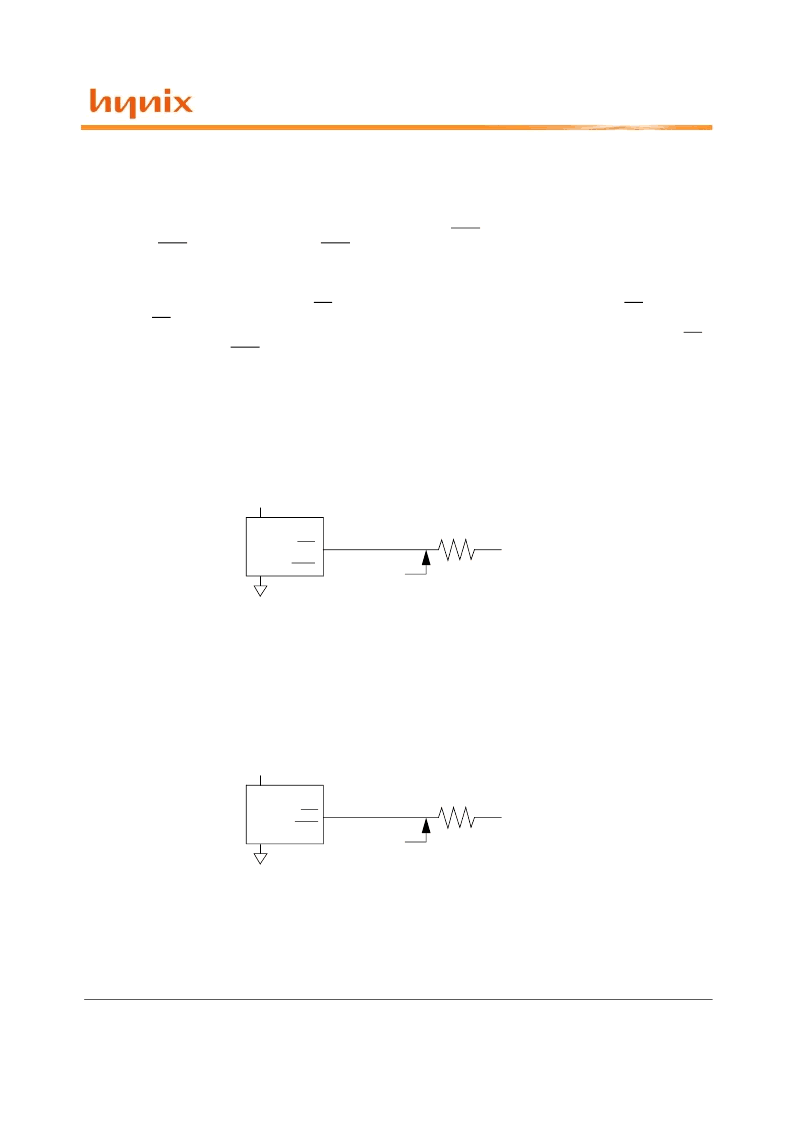- 您現(xiàn)在的位置:買賣IC網(wǎng) > PDF目錄385429 > HY5PS1G831F-Y6 (HYNIX SEMICONDUCTOR INC) 1Gb DDR2 SDRAM PDF資料下載
參數(shù)資料
| 型號(hào): | HY5PS1G831F-Y6 |
| 廠商: | HYNIX SEMICONDUCTOR INC |
| 元件分類: | DRAM |
| 英文描述: | 1Gb DDR2 SDRAM |
| 中文描述: | 128M X 8 DDR DRAM, PBGA68 |
| 封裝: | FBGA-68 |
| 文件頁數(shù): | 23/33頁 |
| 文件大?。?/td> | 540K |
| 代理商: | HY5PS1G831F-Y6 |
第1頁第2頁第3頁第4頁第5頁第6頁第7頁第8頁第9頁第10頁第11頁第12頁第13頁第14頁第15頁第16頁第17頁第18頁第19頁第20頁第21頁第22頁當(dāng)前第23頁第24頁第25頁第26頁第27頁第28頁第29頁第30頁第31頁第32頁第33頁

Rev. 1.2 / Dec 2006
23
1
HY5PS1G431(L)F
1
HY5PS1G831(L)F
General notes, which may apply for all AC parameters
1. Slew Rate Measurement Levels
a. Output slew rate for falling and rising edges is measured between VTT - 250 mV and VTT + 250 mV for
single ended signals. For differential signals (e.g. DQS - DQS) output slew rate is measured between
DQS - DQS = -500 mV and DQS - DQS = +500mV. Output slew rate is guaranteed by design, but is not
necessarily tested on each device.
b. Input slew rate for single ended signals is measured from dc-level to ac-level: from VREF - 125 mV to
VREF + 250 mV for rising edges and from VREF + 125 mV and VREF - 250 mV for falling edges.
For differential signals (e.g. CK - CK) slew rate for rising edges is measured from CK - CK = -250 mV to
CK - CK = +500 mV
(250mV to -500 mV for falling egdes).
c. VID is the magnitude of the difference between the input voltage on CK and the input voltage on CK, or
between DQS and DQS for differential strobe.
2. DDR2 SDRAM AC timing reference load
The following figure represents the timing reference load used in defining the relevant timing parameters of
the part. It is not intended to be either a precise representation of the typical system environment nor a depic-
tion of the actual load presented by a production tester. System designers will use IBIS or other simulation
tools to correlate the timing reference load to a system environment. Manufacturers will correlate to their pro-
duction test conditions (generally a coaxial transmission line terminated at the tester electronics).
VDDQ
The output timing reference voltage level for single ended signals is the crosspoint with VTT. The output tim-
ing reference voltage level for differential signals is the crosspoint of the true (e.g. DQS) and the complement
(e.g. DQS) signal.
3. DDR2 SDRAM output slew rate test load
Output slew rate is characterized under the test conditions as shown below.
4. Differential data strobe
DDR2 SDRAM pin timings are specified for either single ended mode or differential mode depending on the
setting of the EMRS “Enable DQS” mode bit; timing advantages of differential mode are realized in system
design. The method by which the DDR2 SDRAM pin timings are measured is mode dependent. In single
DUT
DQ
DQS
DQS
RDQS
RDQS
Output
V
TT
= V
DDQ
/2
25
Ω
Timing
reference
point
AC Timing Reference Load
VDDQ
DUT
DQ
DQS, DQS
RDQS, RDQS
Output
V
TT
= V
DDQ
/2
25
Ω
Test point
Slew Rate Test Load
相關(guān)PDF資料 |
PDF描述 |
|---|---|
| HY5PS1G831LF | 1Gb DDR2 SDRAM |
| HY5PS1G831LF-C4 | 1Gb DDR2 SDRAM |
| HY5PS1G831LF-C5 | 1Gb DDR2 SDRAM |
| HY5PS1G831LF-E3 | 1Gb DDR2 SDRAM |
| HY5PS1G831LF-E4 | 1Gb DDR2 SDRAM |
相關(guān)代理商/技術(shù)參數(shù) |
參數(shù)描述 |
|---|---|
| HY5PS1G831LF | 制造商:HYNIX 制造商全稱:Hynix Semiconductor 功能描述:1Gb DDR2 SDRAM |
| HY5PS1G831LF-C4 | 制造商:HYNIX 制造商全稱:Hynix Semiconductor 功能描述:1Gb DDR2 SDRAM |
| HY5PS1G831LF-C5 | 制造商:HYNIX 制造商全稱:Hynix Semiconductor 功能描述:1Gb DDR2 SDRAM |
| HY5PS1G831LF-E3 | 制造商:HYNIX 制造商全稱:Hynix Semiconductor 功能描述:1Gb DDR2 SDRAM |
| HY5PS1G831LF-E4 | 制造商:HYNIX 制造商全稱:Hynix Semiconductor 功能描述:1Gb DDR2 SDRAM |
發(fā)布緊急采購,3分鐘左右您將得到回復(fù)。